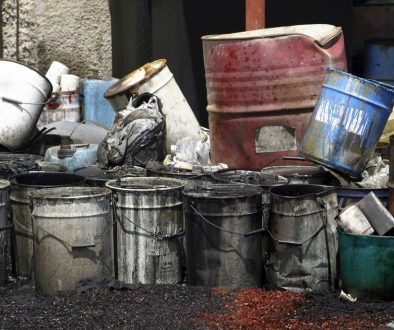Handling hazardous waste can be a daunting task, especially during home improvement projects. From old paint cans to broken electronics, it’s important to know how to manage these materials safely. Proper disposal of hazardous waste not only protects the environment but also ensures the safety of everyone in the household.
When working on home projects, it’s easy to come across various hazardous materials. Identifying these items is the first step in their proper disposal. Common hazardous waste includes chemicals, oils, batteries, and certain types of building materials. Knowing what qualifies as hazardous waste helps us take the right precautions.
Another crucial aspect of hazardous waste management is proper storage and handling. Keeping hazardous materials in secure containers away from children and pets is essential. Additionally, understanding the steps involved in safely disposing of hazardous waste can prevent potential hazards and legal issues. So, let’s delve deeper into identifying hazardous waste, safe storage practices, disposal steps, and the benefits of using professional services to handle these materials responsibly.
Identifying Hazardous Waste in Home Projects
Recognising hazardous waste is essential for proper disposal. In home projects, hazardous waste can be found in many forms. Leftover paint, solvents, and adhesives are common examples. These materials contain chemicals that can harm the environment and our health if not disposed of correctly. Additionally, old batteries, fluorescent light bulbs, and electronic waste, such as broken computers or mobile phones, also fall under hazardous waste.
Household cleaners, pesticides, and motor oil are other items to look out for. These substances can be dangerous if spilt or mixed with other rubbish. Gardening products and some home renovation materials may also contain toxic substances. It’s important to check labels and follow any disposal instructions provided. Identifying hazardous waste early on ensures we take the necessary steps to handle and dispose of it safely.
Proper Storage and Handling of Hazardous Materials
Once we identify hazardous waste, proper storage and handling become crucial. We should always store these materials in original containers, with labels intact. This helps avoid any confusion about the contents. Keep containers tightly closed and in a cool, dry place away from children and pets. If the original container is damaged, transfer the material to a new one that is clearly labelled, specifying the contents and any hazards.
Handling hazardous materials requires caution. Use gloves and masks to protect ourselves from exposure. Never mix different hazardous materials, as this can cause dangerous reactions. Spills should be cleaned up immediately with appropriate materials and disposed of as hazardous waste. By storing and handling hazardous materials correctly, we prevent accidents and ensure that these substances are manageable until they can be disposed of safely.
Steps for Safe Disposal of Hazardous Waste
Disposing of hazardous waste correctly is crucial for safety and environmental protection. First, hazardous waste should be separated from regular rubbish. Never mix hazardous waste with other types of waste, as this can cause chemical reactions and make disposal more dangerous. Use separate containers for each type of hazardous material to avoid cross-contamination.
Next, find local facilities or services that handle hazardous waste disposal. Many community recycling centres offer special collection days for hazardous waste. Before transporting the waste, make sure each container is properly sealed and labelled. Follow any guidelines provided by the disposal facility, including appointment times and packaging requirements. By taking these steps, we ensure that hazardous waste is processed safely and in compliance with regulations.
Benefits of Professional Hazardous Waste Removal Services
Hiring professional hazardous waste removal services offers several advantages. One of the biggest benefits is safety. Professionals have the training and equipment to handle hazardous materials without risk. They know how to package and transport these wastes according to legal standards, which can be complicated for individuals.
Another advantage is convenience. Professional services save us time and effort by managing the entire disposal process. They provide the right containers, collect the waste, and ensure it is disposed of properly. This is especially useful for large amounts of hazardous waste generated during major home projects. Moreover, professionals understand and comply with all regulations, reducing the risk of legal issues. Using a professional service ensures peace of mind and contributes to safer waste management practices.
Conclusion
Handling hazardous waste in home projects requires careful planning and execution. Properly identifying, storing, and handling these materials is just the beginning. Following safe disposal practices is crucial to protect both our health and the environment. When the task seems overwhelming, professional hazardous waste removal services can offer a safe and convenient solution.
For those undertaking home projects, ensure your hazardous waste is managed responsibly. Whether you’re dealing with small amounts or significant volumes, taking the right steps makes a big difference. Contact Enviro Skip Hire in Staffordshire today to learn how we can help you safely dispose of your hazardous waste, keeping your home and community safe.




